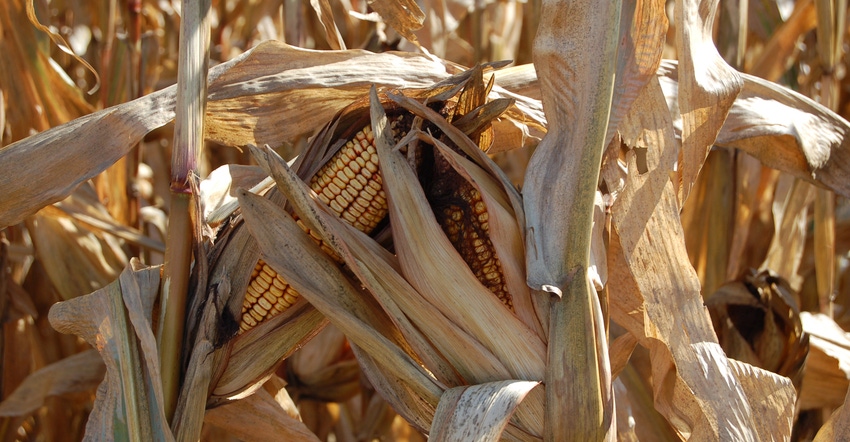August 24, 2021

We could have a record corn crop in 2021! At least it looks that way in the eastern Corn Belt. Corn plants in many fields added a couple of extra rows per ear and even added a second ear. Plants were busy making as many progenies as possible.
Timely rains during the same period made certain that kernel depth and test weight improvement further added to already high potential yields. However, conditions that were favorable for crop growth also were conducive to development of fungal leaf diseases such as northern corn leaf blight and gray leaf spot. Many people sprayed for these diseases. In some cases, gray leaf spot did not explode as we might have expected.
Corn is made in most areas unless it was planted very late. But the crop isn’t in the bin yet, and we should protect our crops.
Disease potential
Stalk rots and ear rots may be here to spoil the fun. We haven’t seen much anthracnose leaf blight this year. However, roots and stalks weakened by other leaf diseases can also be affected by this fungus since its spores can live in the soil for a long time, especially in corn-after-corn and no-till situations.
Anthracnose leaf blight has been one of the biggest cornstalk killers the last few years. It can infect stalks when spores are splashed from the soil to lower internodes of stalks. It makes black spots on stalks that look like shiny shoe polish. The stalks become black inside also, and can rot and go down.
Conditions this year are favorable for diplodia and gibberella ear and stalk rot diseases in some areas. Like anthracnose, spores of these fungi can survive in the soil for many years. These pathogens also affect the ears. Bob Nielsen, a Purdue University Extension corn specialist, noted during pollination that cloudy weather at that time could make corn more susceptible to ear rots. That’s often when the initial infection occurs.
Diplodia ear rot usually starts at the base of ears. It is whitish and can spread to the whole ear. Infected kernels are light in test weight and not known to produce toxins.
Gibberella ear rot is produced by a pink fungus that generally starts at the tips of ears. It can produce a mycotoxin knows as fumonisin. Test suspected grain before feeding it.
Both diplodia and gibberella can cause yield loss if corn is not harvested on time. If you find these diseases, harvest them when you’re ready.
Scouting pays
Keep on scouting your fields. Crop scouting starts at emergence and does not end until the crop is in the bin. As the crop starts to mature, you need to scout for ear and stalk rots by pulling back the husks, pushing or pinching the stalks, and planning which fields should be harvested first to reduce field losses.
Mother Nature has been kind in many areas during this growing season. For most of the eastern Corn Belt, this has been an almost perfect corn growing season, except for perhaps too much water at times. Let’s hope for a good harvest season!
Nanda is director of genetics for Seed Genetics Direct, Jeffersonville, Ohio. Email [email protected] or call 317-910-9876. If no one answers, please leave a message.
About the Author(s)
You May Also Like






